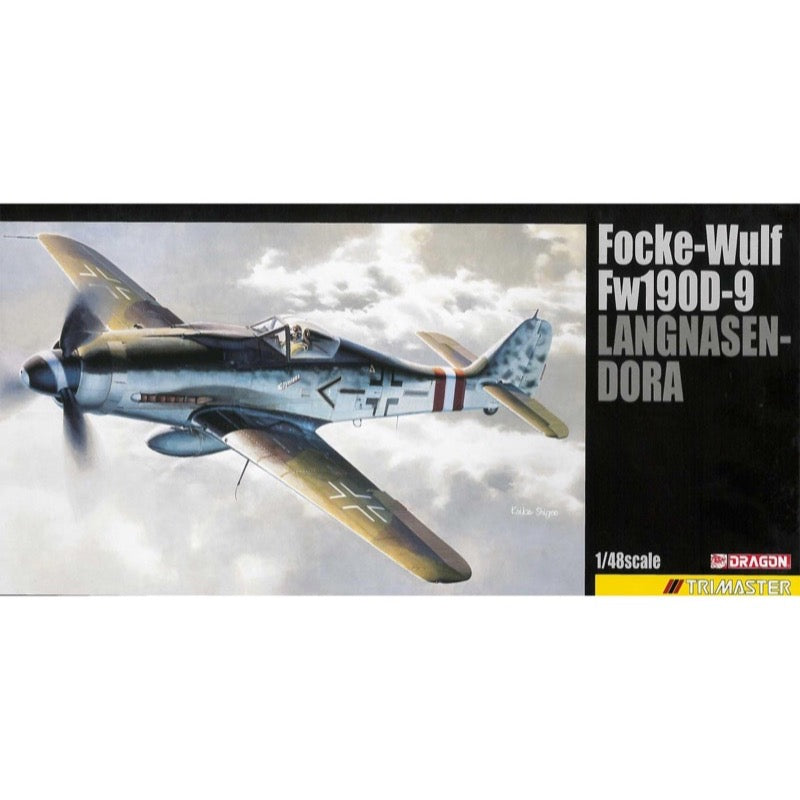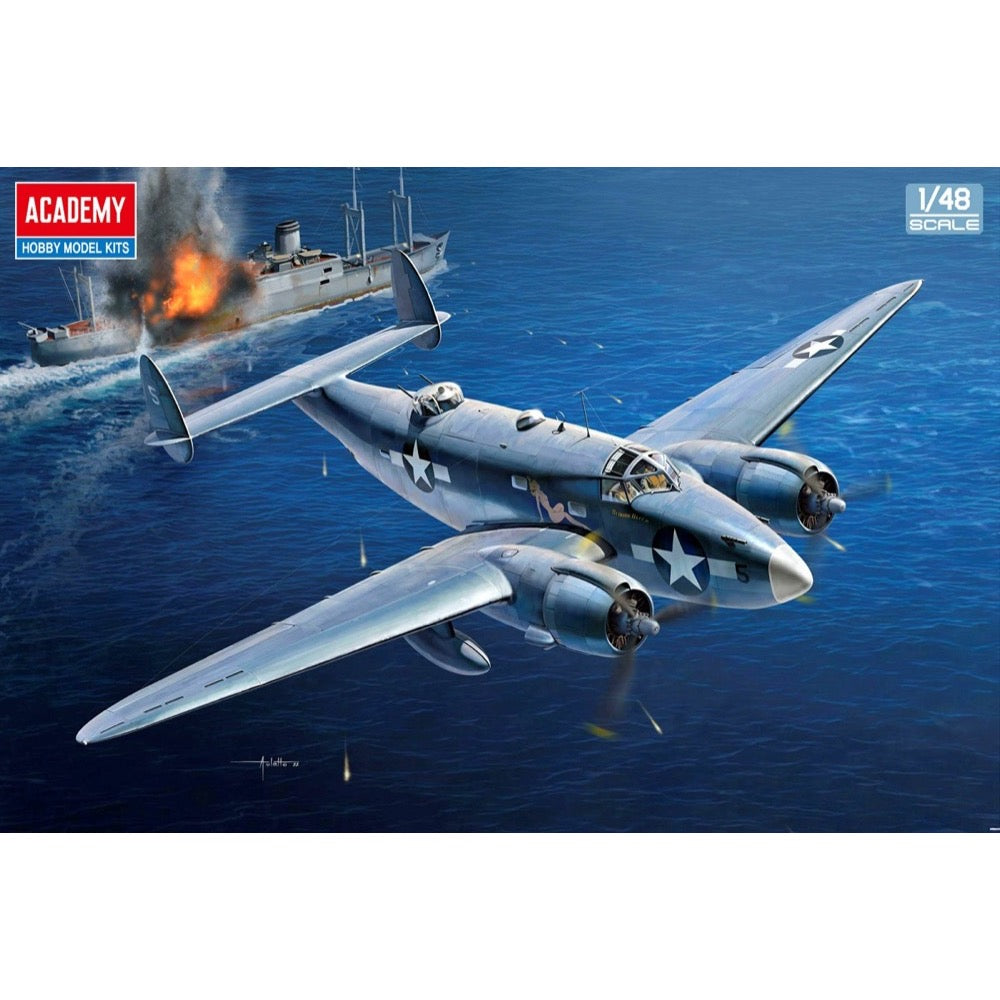
Academy 12347 1/48 USN PV-1 "Solomon Islands Theatre" Aus Decals
Lockheed Ventura was an American bomber, patrol and night fighter during World War II. The aircraft had a metal structure, in a spine-wing configuration with a landing gear retracted in flight. It was powered by 2 Pratt and Whitney R-1850 engines, 2000 HP each. The flight of the prototype took place in 1940, and serial production continued in 1941-1944. The armament was usually made of 8 Lewis machine guns with calibers of 7.62 mm or 7.7 mm or 12.7 mm and up to 1134 kg of bombs.
Features
- USN WWII medium, twin-engine bomber/patrol aircraft.
- Detailed cockpit, well defined panel lines
- Build with bomb bay doors open or closed
Three U.S. Navy markings:
- PV-1 "Blonde Blitz" of unknown unit, Russel Island, Solomon, Mid 1943
- PV-1 "Scooters Dream" of unknow unit, Russel Islands, Solomon Mid 1943
- PV-1 "641", VB-148, July 1944

Academy 12624 1/144 CH-47D/F/J/HC.Mk.1 4 Nations
The CH-47 is a large transport helicopter that is active around the world. This model kit from Academy expresses each panel lines with precise molding; decals for five versions are included, including the Japan Ground Self-Defense Force and Air Self-Defense Force, for the squadrons of four different countries.
This is an injection-plastic jet aircraft model kit.
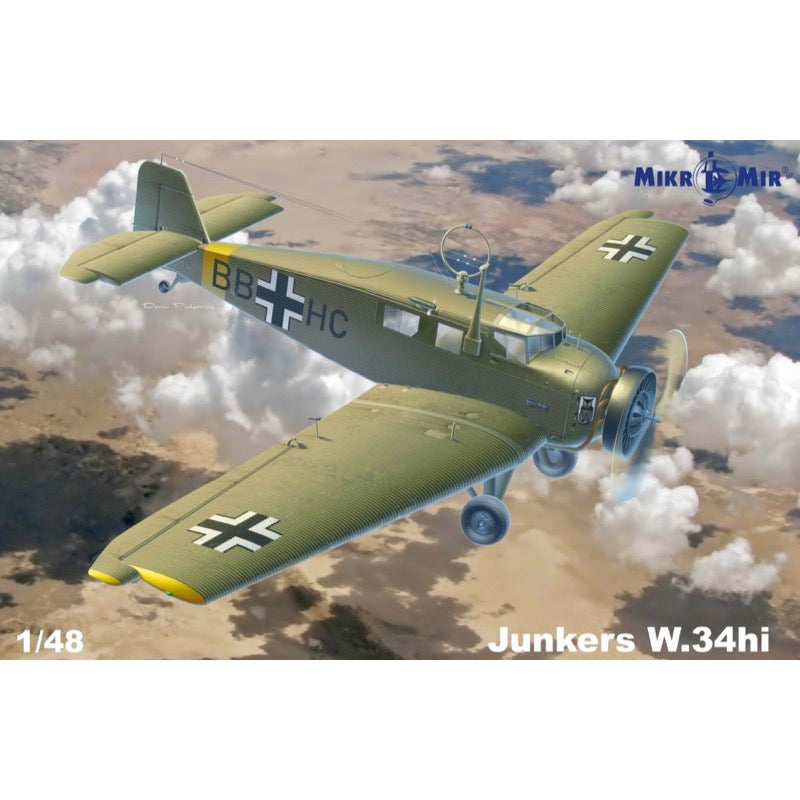
Mikro Mir 48-019 1/48 Junkers W34Hi
Junkers W.34
- German transport aircraft
- 1/48 scale
- Model length : 215mm, wingspan : 385mm.
- In addition to decal, photo-etching and masks, the model is equipped with a 3D decal.

Mark One Models 144127 1/144 Fiat G50 Initial Series
Fiat G.50 ‘Initial Series’
The Fiat G.50 was an Italian fighter aircraft designed in the mid-1930s, which became the most advanced fighter to be produced in Italy at that time. The prototype flew in February 1937, while the first production aircraft were delivered to the air force two years later.
In the autumn of 1940, an improved version with an extended combat range was introduced and designated the G.50bis. In total, production of the G.50 reached 784 aircraft in seven production series; 426 of which were manufactured by Fiat (Aeritalia) and another 358 were built by CMASA. 58 aircraft were exported: 13 G.50s to Spain, 35 aircraft to Finland and 10 went to Croatia.
It was a single-seat, all-metal low-wing monoplane featuring an open cockpit and a retractable undercarriage. It was powered by a Fiat A.74 two-row radial engine and was fitted with a Hamilton-Fiat propeller. The first versions of the G.50 were fitted with different configurations of armament: either a single or a pair of 12.7mm machine guns in the nose and an additional pair of 7.7mm guns in the wings. The Fiat G.50bis can be distinguished by the redesigned tail, addition of a larger rudder and relocated tail wheel.
The Fiat G.50s were extensively used on various fronts by Italy, including deployment in Belgium, North Africa, in the Balkans, in the Aegean and the Italian mainland. In Finland they served with distinction during the Winter War of 1940 and the Continuation War of 1941–44 against the Soviet Union.
Colour Schemes
-
Fiat G.50 Srs.IV (CMASA-built), Black 352-Red 13 (MM 5403), 352nd Flight (352a Squadriglia), 20th Fighter Squadron (20 Gruppo Caccia Terrestre, CT), 56th Wing (56 Stormo), Italian Air Corps (Corpo Aereo Italiano, CAI), Italian Air Force (Regia Aeronautica, RA), Ursel airfield, Belgium, autumn 1940
-
Fiat G.50 Srs.IV (CMASA-built), Black 354-Red 3 (MM unknown), 354th Flight (354a Squadriglia), 24th Fighter Squadron (24 Gruppo Caccia Terrestre, CT), 52nd Wing (52° Stormo), Italian Air Force (Regia Aeronautica, RA), Tirana airfield, Albania, January 1941
-
Fiat G.50 Srs.III (CMASA-built), FA-27 (MM 4944), Black FA-27, 3/LeLv 26 (3rd Fltight, 26th Fighter Squadron), Finnish Air Force (Ilmavoimat), Kilpasilta airfield, Finland, 1942
-
Fiat G.50 Srs.I (CMASA-built), FA-17 (MM 3599), Black FA-17/White 1, 1/LeLv 26 (1st Flight, 26th Fighter Squadron), Finnish Air Force (Ilmavoimat), Lunkula airfield, Finland, summer 1941
Includes
-
2 injection-moulded kits
-
38 parts per kit
-
1 clear part (cockpit windshield)
-
Decal sheet
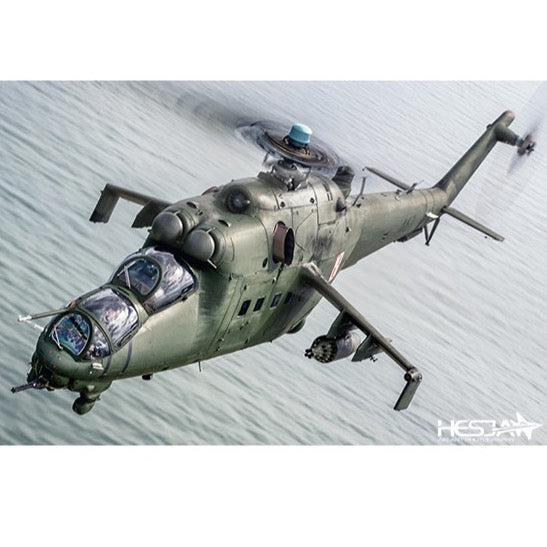
Trumpeter 05812 1/48 Russian Mil Mi-24 Hind E
Mi-24V / Mi-35 "Hind E" Mi-24V (Hind-E) is another improved version, a development of Mi-24D. The major change consists in the upgraded and more efficient SHTURM - V missile system with 9M114 (AT-6 Spiral) radio-guided anti-tank missiles launched from two pairs of cylindrical pods mounted on wingtips. Also added were B-8V rocket pods for 20 80 mm S-8 rockets, UPK-23-250 pods with two-barrel Gsh-23L and 250 rounds, GUV9A universal pods which can carry a 30 mm 9-A-800 automatic grenade launcher, or one 12.7 mm 9-A-624 four-barrel machine gun and two four-barrel 7.62 mm 9-A-622 machine guns. It was equipped with TV3-117V engines with improved height characteristics and optional exhaust mixer boxes to cool exhaust gasses, and auxiliary fuel tanks with a capacity of 450 litres. Since the War in Afghanistan, Mi-24Vs received radar homing and warning system (RHAWS), infra-red countermeasures (IRCM) and an active IRCM jammer. These equipments were also fitted to some late Mi-24Ds, which have sometimes been refered to as Hind Ds Mod. The degraded version exported outside the Warsaw Pact was called Mi-35.
Features
- Detailed fuselage w/accurate design
- Canopy made from clear parts
- Finely detailed cockpit,gear cabin,
- photo-etched parts included
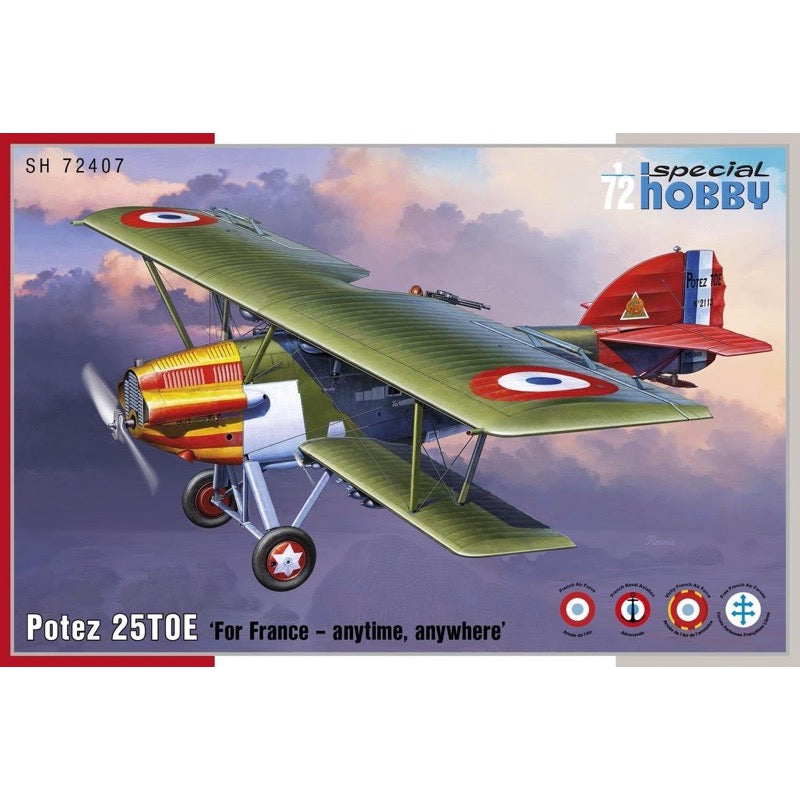
Special Hobby 72407 1/72 72407 Potez 25 TOE
The Potez 25 biplanes enjoyed long and faithful service with the French military, it lasted from the 1920s until the end of WW2. The TOE version of the biplane was primarily destined to fly in the France’s overseas colonies.
The kit offers four interesting and colourful scheme options, a Vichy machine boasting distinctive red-yellow stripes which saw service in French Indochina in 1942, a pre-war airframe with white stripes on its top wing, an Aeronavale machine which was operated over mainland France in 1940 and finally a Free French Potez as used in Syria in 1944.
Features
-
Highly accurate and nicely detailed model
-
Four machines illustrating the type’s long service for France
-
Meticulously designed decal sheet
-
Photo-etched parts are included too
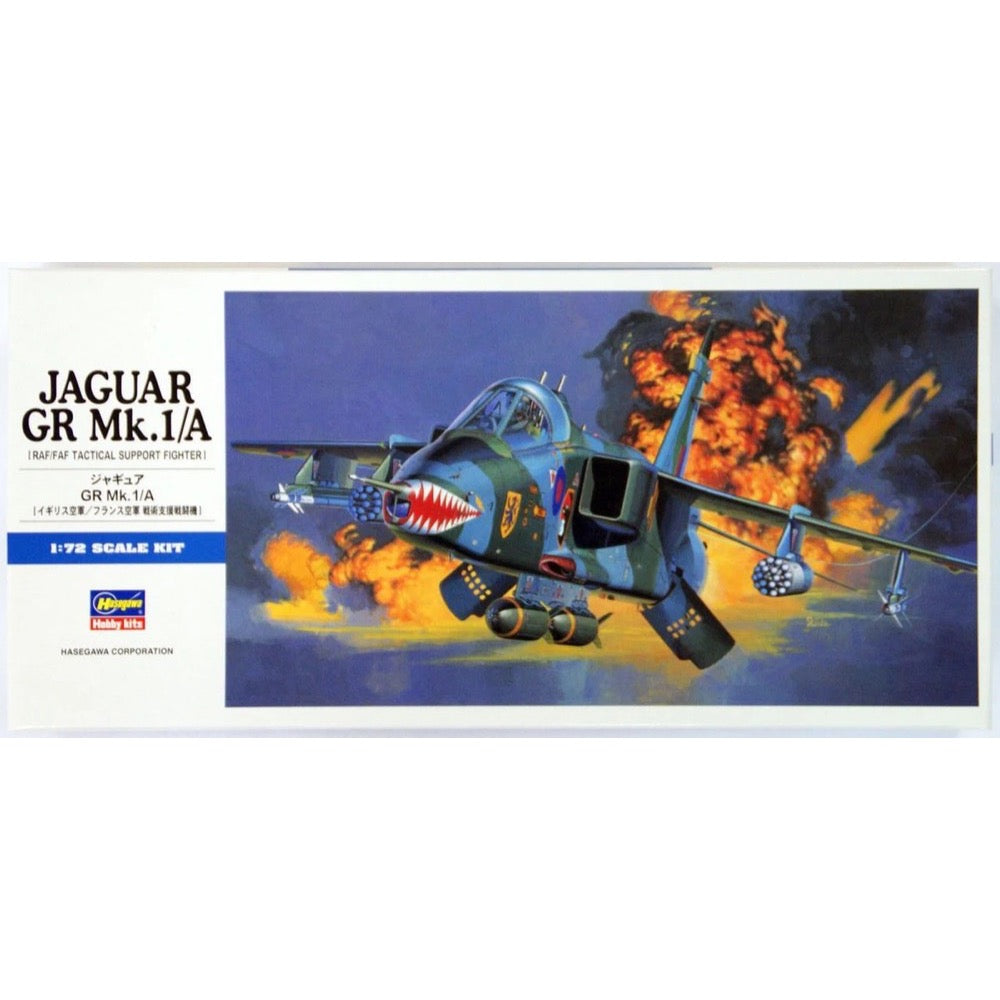
Hasegawa 00432 1/72 Jaguar Gr.Mk. 1/A
The Jaguar was the first tactical support fighter aircraft jointly developed by the UK and France in 1965, and five types were developed, including single-seat and two-seater aircraft.
The RAF's GR Mk.1 has an excellent navigation/attack system, digital computers and laser range finder, allowing for supersonic low altitude penetration.
The French A-type also has a laser range finder added to the nose of the 80th and later aircraft, improving its capabilities.
Features
- Highly detailed model kit
- Accurate replication
- Precise molding for easy assembly
- Realistic decals for added authenticity
- Suitable for both experienced modelers and beginners
- Sleek design and intricate details
- Perfect addition to any collection.

Arma Hobby 70070 1/72 P-51D Mustang
P-51D Mustang Model in 1/72 Scale
New Arma Hobby 2024 Molds.
Produced under license from Boeing. Boeing, P-51 Mustang and the distinctive Boeing logos, product markings and trade dress are trademarks of The Boeing Company.
Includes
- Sprues with parts to build of most versions of the aircraft straight from the box.
- Decals with markings for three aircraft.
- Masks for the canopy and wheels.
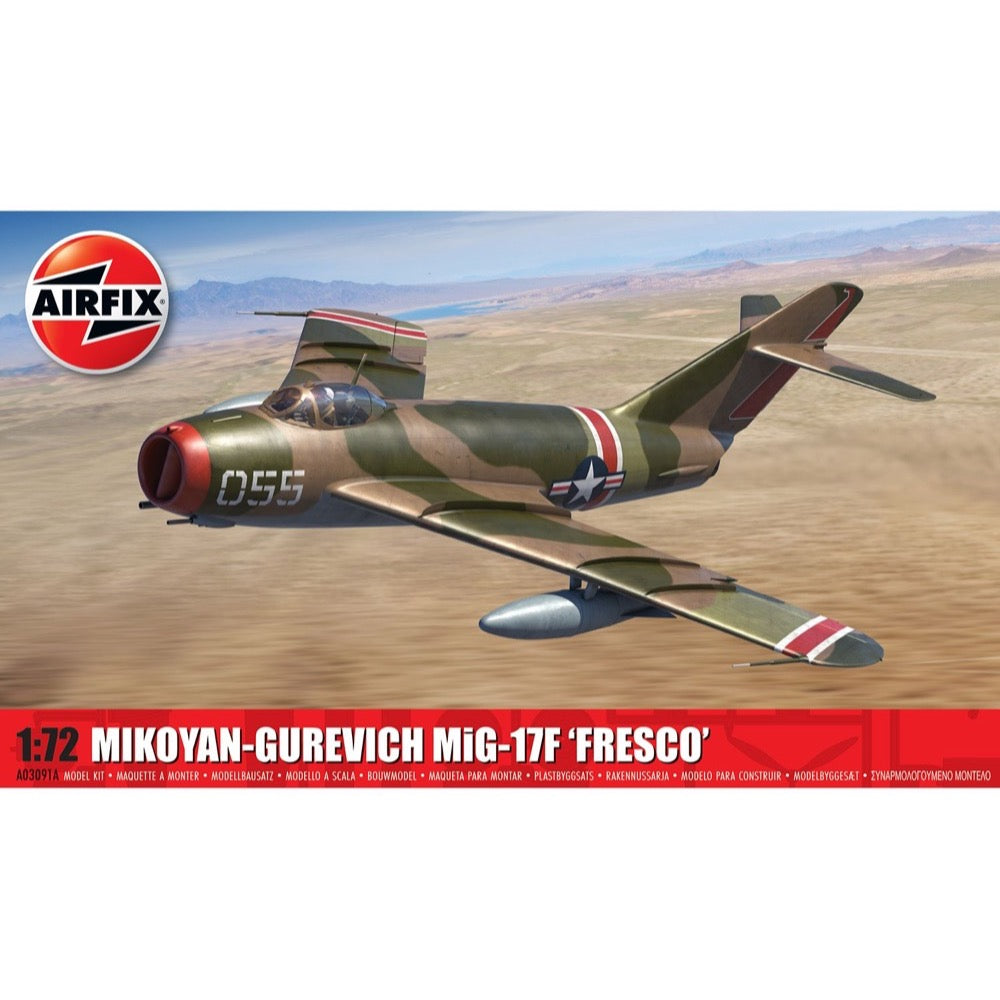
Airfix 03091A 1/72 Mikoyan-Gurevich MiG-17F Fresco
The end of the Second World War saw victorious Allied nations desperately attempting to secure details of German jet technology and high-speed research data which could be applied to their own jet projects. The Soviet Union used information and engine technology obtained from Britain to introduce the diminutive Mikoyan-Gurevich MiG-15 in 1949 - one of the most capable of the early jet fighters.
Even as this aircraft proved effective during the Korean War, the Soviets were already working on its successor. The larger and faster Mig-17 Fresco may have looked like a larger incarnation of its predecessor, yet this was a completely redesigned aircraft, incorporating many improvements over the MiG-15 and a significant upgrade in Soviet jet capability.
The MiG-17 was designed to perform the role of bomber killer and was never intended as a dogfighter. However, its exceptional agility would allow this aircraft to score combat victories over much heavier and more modern American designs.
The Vietnam War was a sobering experience for the US Air Force, as some of their modern aircraft fell victim to the guns of the MiG-17. Lighter and much more manoeuvrable than the US aircraft, the subsonic MiG-17 claimed victories over aircraft like the F-105 Thunderchief and McDonnell Douglas Phantom, resulting in the US developing new agile air superiority fighters.
Possessing excellent performance, and being cost-effective and easy to maintain, the rugged MiG-17 was produced in large numbers. It became the standard Warsaw Pact fighter from the mid-1950s and for the next decade, with aircraft produced under licence in both China and Poland.
It was an attractive fighter option for many of the world's smaller air forces and more than thirty overseas nations eventually operated the type. Perversely, for a nation against which the MiG-17 was designed to combat, America became home to significant numbers of these aircraft, most coming into the hands of private collectors but a small number used in dissimilar aircraft trials and to perfect combat techniques against smaller, more agile jet fighters. Two beautifully restored examples have also been popular display performers on the US Airshow circuit over the years.

Platz TPA-16 1/48 US Navy F-14A Tomcat VF-111 Sundowners
The F-14A Tomcat has been deployed and operated as the main force of the United States Navy since 1973. The twin-engine F-14A Tomcat adopts an automatically controlled variable swept and demonstrates high STOL performance, excellent high speed, and great maneuverability. In addition, it is equipped with AN/AWG-9 fire control radar that can track 24 targets simultaneously and attack six of them simultaneously, and AIM-54 Phoenix long-range air-to-air missile boasting an effective range of about 160 km.
The United States Navy Fighter Squadron 111(VF-111) Sundowners were also equipped with F-14A, and flew to Atsugi Air Base in Japan with the marking that made the image of the Japanese national sun flag. After that, the F-14 kept improving repeatedly and continued to play an active role in the US Navy's fleet defense mission for 30 years.
Features
- This is a plastic model assembly kit that reproduces the U.S. Navy carrier-based fighter F-14A Tomcat with ITALERI made parts and a Japanese instructions sheet.
- Scale in 1/48, the finished size is 39cm in length.
- The variable wing is movable even after assembly is completed so that the modeler can enjoy the different angles.
- Missiles such as AIM-54 Phoenix and Sparrow, Sidewinder as well as drop tanks are also reproduced.
- Marking is the F-14 belonging to VF-111 Sundowners, which is popular among the F-14 squadrons.
- The decal is silkscreen printing made by Italian Cartograf with high quality.
- Come with a masking sheet convenient for canopy frame painting.
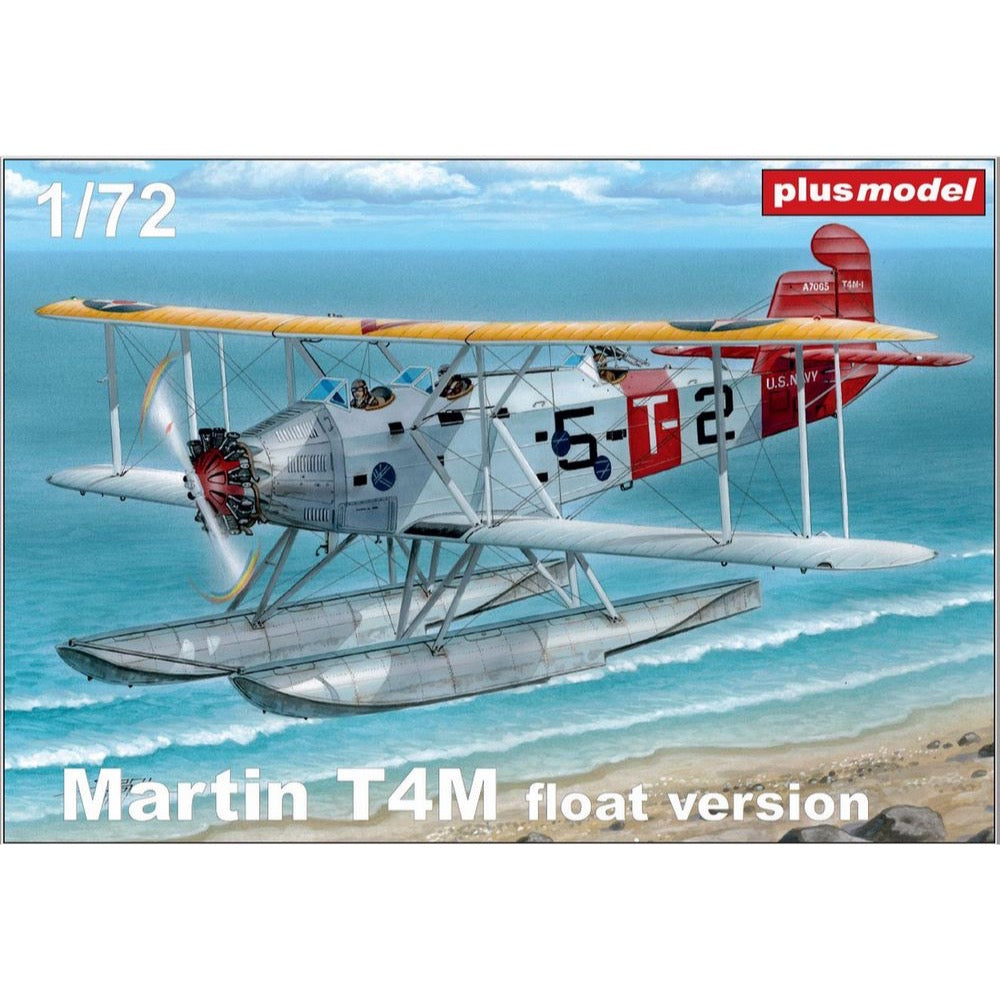
Plus Model AL7072 1/72 Martin T4M Float Version
AL7072 Martin T4M float version
The Martin T4M was an American torpedo bomber of the 1920s. A development by the Glenn L. Martin Company of their earlier Martin T3M, and, like it a single-engined biplane, the T4M served as the standard torpedo bomber aboard the aircraft carriers of the United States Navy through much of the 1930s.
Plastic model of the American torpedo plane Martin T4M in a wheeled version. The kit contains decals for three versions.
Specification
- Origin Czech republic
- Product No. Manufacturer AL7072
- Scale 1/72


